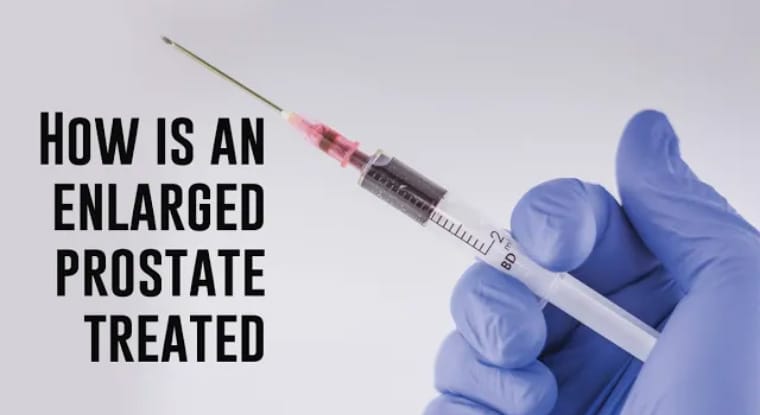KEY TAKEAWAYS:
- Proper use of the prostate-specific antigen (PSA) test is a recent advance in prostate cancer research, allowing doctors to better identify and categorize high risk or low risk, aggressive or indolent cancers and develop targeted treatment plans.
- Advances in molecular biology, such as studying abnormal prostate cancer genes, help identify high-risk cancers and better understand the likelihood of cancer growth and spread.
- Advanced Urology Institute offers comprehensive prostate cancer care, utilizing the latest research knowledge and techniques to minimize overtreatment and unnecessary biopsies and develop targeted treatment plans for patients.
The good news is that there are various treatments and management options for prostate cancer, even if it is found at a later stage. When detected early, the cancer is highly treatable, and most men with the disease survive.
“Prostate cancer is quite complex, which makes it difficult to predict how fast or slow it will grow and the risk associated with it,” says Dr. Jonathan Jay. “That is why, during diagnosis, we evaluate several factors to determine the aggressiveness of the tumor. After we determine the risk associated with the cancer, we are better placed to recommend the right treatment for our patients, which can yield great results,” he affirms.
The cancer is categorized as low risk, intermediate risk, or high risk depending on its ability to grow and spread to other areas of the body. Low risk prostate cancer is slow-growing and unlikely to spread quickly. In contrast, a high risk cancer is likely to spread rapidly outside the prostate.
Improved PSA Screening
One recent advance in prostate cancer research is the proper use of the prostate-specific antigen (PSA) test. Although the PSA test has had its limitations, it is still valuable for identifying and categorizing cancer as high risk or low risk, aggressive or indolent. When correctly used, it shows with accuracy those patients who have the aggressive type of cancer. This finding effectively guides the doctor to develop a more targeted treatment plan.
“The PSA got a bad reputation because it was used wrongly,” says Dr. Jonathan Jay. “But today, urologists understand that the PSA is still a very valuable tool in prostate cancer diagnosis and treatment. And it is now known that the significance of the PSA is not in whether it is elevated relative to the average, but in how it changes over time,” he asserts.
Studies have shown that the PSA is not abnormal just because it is elevated compared to the average. If the PSA of a man is stable over time, it doesn’t show prostate cancer, let alone an aggressive type of the disease. But if the PSA of a man has been stable for a prolonged period and then changes suddenly, it shows that something is wrong.
“If your PSA is one over the years, but changes to 3, then something is wrong, regardless of the fact that 3 is still within the normal range,” explains Dr. Jonathan Jay. “And if you’ve had a PSA of 6 over the past many years, then it’s not abnormal since it remains stable, regardless of the fact that it’s not within the normal range,” he adds.
Enhanced Precision with Molecular Biology
Significant progress has been made in prostate cancer research in the area of biopsies. Traditionally, prostate cancer has been confirmed and graded through a biopsy. To confirm a diagnosis, a urologist takes 8-12 needle biopsies along the prostate in a random sample and examines the cells under a microscope. However, while a biopsy tends to provide more accuracy than a typical PSA, it doesn’t give a perfect picture of the cancer.
“It is difficult to detect an aggressive cancer through the way cells look or behave,” says Dr. Jonathan Jay. “Besides, a biopsy may miss the specific areas of the prostate that would help to distinguish an aggressive from an indolent cancer,” he adds.
Advances in this area have ensured more accuracy and reduced the risk of misdiagnosis. For instance, abnormal prostate cancer genes can now be used to identify high risk cancer. The look of genes, occurrence of virulence factors, behavior, and other features are studied to better understand how likely it is that a cancer will grow and spread.
“Nowadays, we look at genes to determine the aggressiveness of prostate cancer,” says Dr. Jonathan Jay. “For example, genes of cancer cells may contain virulence factors or show how fast the cells will multiply and spread to other areas. This helps determine which cancer should be treated faster, and which categories of patients may benefit from therapeutic interventions,” he adds.
Apart from genomics, urologists can now use magnetic resonance imaging (MRI) technology before a biopsy to look for areas in the prostate that are suspicious of the cancer. This is possible thanks to new technology that fuses MRI images with real-time ultrasound to guide prostate needle biopsies to areas of specific concern.
Why Seek Prostate Cancer Treatment At Advanced Urology Institute?
At Advanced Urology Institute, we understand that prostate cancer is highly treatable when detected early and accurately.
We offer comprehensive prostate cancer care that includes the use of the latest research knowledge and techniques. With the advances in prostate cancer research, we can know who has aggressive or indolent cancer with greater accuracy, minimizing the chances of overtreatment and unnecessary biopsies.
Moreover, our urologists are acquainted with up-to-date prostate cancer knowledge, tools, and techniques. All of this helps guide treatment and enables us to develop more targeted treatment plans for our patients.
When you come to see us at our Naples, Florida office for diagnosis or treatment, we will consider your unique situation from a point of knowledge and recommend the best possible treatment for you.
For more information on prostate cancer treatment and diagnosis, visit the Advanced Urology Institute website.
TRANSCRIPTION:
I’m Jonathan Jay. I’m a board-certified urologist with Advanced Urology Institute.
Listen, I’m excited about all facets of urology. You know, cancer is a big thing. Remember, prostate cancer didn’t have a chance when we died of our heart attack at 60 and 70, but it lived to be 90 and 100. Prostate cancer has got a big chance. We’re going to see a lot of patients, actually, their lives being affected by this disease.
So, one of the things that I like is that our ability to define the disease is improving. For instance, not only do we have PSA, PSA stands for prostate-specific antigen. This is a protein excreted by the prostate that can be detected at certain numbers, and there should be a certain number within the serum at a certain age. And if it’s elevated, or if it’s different than it used to be, then we know something’s wrong. And that’s important to understand. PSA got a bad reputation. Why was that? Because we used it wrong, not because it was a bad test.
The significance of PSA is not what it is in you relative to average, but what it is in you over time. For instance, my PSA for the past 10 years has been one. If my PSA is 3, which is considered normal, something’s wrong. Mr. Jones has a PSA of 6 for the past 10 years. This is above average. But he doesn’t have prostate cancer because his PSA is stable. So, again, we use this PSA in a wrong manner. That’s been one of the great evolutions of understanding this. And understanding, too, there’s some molecular biology. Again, we used to grade prostate cancers by looking at a prostate cancer under a microscope to understand the pattern and what it looked like.
You can’t really tell the aggressiveness of a prostate cancer by looking at it in its morphology. For instance, you’ve got two people walking down the street. You’ve got a young kid with a hoodie on. You’ve got a well-dressed man with a trench coat. Who’s your bank robber? Well, the guy with the trench coat has a machine gun under his trench coat. You can’t tell the behavior of something by the way it looks. So what we’ve done with prostate cancer is we have the ability to take that cancer and look at the genetics and define if it can multiply fast, can it move to other places. We can look at the virulence factors of these cancers to tell which cancer should be treated and which cannot. This is early in the process of looking at molecular biology and making decisions on how to treat and who to treat for prostate cancer. But it’s the light that we need as we hone this in and become more, be better at defining it. We’re going to make better decisions on who to treat and not to treat.
REFERENCES:
- “Prostate Cancer Screening Tests.” 4 Jan. 2021, https://www.cancer.org/cancer/prostate-cancer/detection-diagnosis-staging/tests.html.
- “Prostate Cancer – Early-Stage: Symptoms, Diagnosis & Treatment.” https://www.urologyhealth.org/urologic-conditions/prostate-cancer.
- “What Are the Treatment Options for Aggressive Prostate Cancer?.” 8 Oct. 2020, https://www.roswellpark.org/cancertalk/202010/what-are-treatment-options-aggressive-prostate-cancer.




 This focused biopsy is called a
This focused biopsy is called a 
 One of the inevitable consequences of aging in women is urinary problems. With increasing age, the pelvic floor muscles—a group of muscles that support
One of the inevitable consequences of aging in women is urinary problems. With increasing age, the pelvic floor muscles—a group of muscles that support 


 An
An 
 A urologist can prescribe medication to reduce the symptoms of an enlarged prostate and also to control the enlargement. The available medications include:
A urologist can prescribe medication to reduce the symptoms of an enlarged prostate and also to control the enlargement. The available medications include: